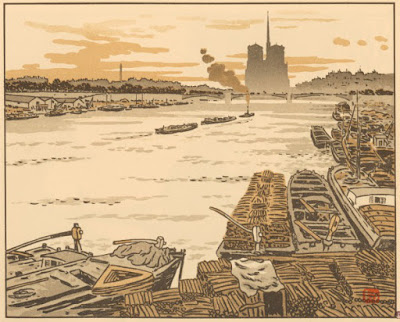One can not live by woodblock prints alone so for a change today something very different:
"Let them deliver it into the hand of the workmen who have the oversight of the house of the LORD, and let them give it to the workmen who are in the house of the LORD to repair the damages of the house, to the carpenters and the builders and the masons and for buying timber and hewn stone to repair the house". (2 Kings 22:5-6)
I would like to ask the help of readers, visitors and all those who may stumble over this posting to establish which biblical theme is shown in this old (master) drawing (24x40 cm). People bringing goods (gifts ?) and Jesus (or King Joshua in the above passage ?) in a coordinating role pointing towards receiving builders/constructors. In the background a building is erected or repaired. I'm no scripture expert, not even religious or a believer, so please send better suggestions.
Knowing also very little about old master drawings I guess the drawing is 17th maybe even 16th century, possibly Italian and drawn with red chalk. There are signs of earlier/older repairs, the whole sheet has been probably "doubled" (an extra layer of supporting paper added) suggesting that a previous owner valued the drawing to a high extend. It is beautifully framed and its overall condition is "pretty good" considering its presumed age.
There's a monogram in a cartouche on a stone, which reads possibly (W J v R)
Googling for information I stumbled over a drawing by Italian renaissance artist Andrea Schiavone (1510/15-1563) executed in a similar style and technique (red chalk, biblical theme, use of shadows and lining etc..) suggesting it's provenance (where was it made ?) and age....... Schiavones "The Last Supper" is in the collection of Spaightwoodgalleries in Upton (MA) USA.
Googling for information I stumbled over a drawing by Italian renaissance artist Andrea Schiavone (1510/15-1563) executed in a similar style and technique (red chalk, biblical theme, use of shadows and lining etc..) suggesting it's provenance (where was it made ?) and age....... Schiavones "The Last Supper" is in the collection of Spaightwoodgalleries in Upton (MA) USA.
 |
| Andrea Schiavone (It.) Last Supper |
But all these old red chalk drawings look very much alike to the layman's eye. If you have clues, hints or suggestions (or questions) please let me know and drop an email:
All pictures embiggen by mouse-click, if you would like highest resolution pictures or other/more details do not hesitate asking.
(Follow the label (below) to another extraordinary old master drawing)
(Follow the label (below) to another extraordinary old master drawing)
























































